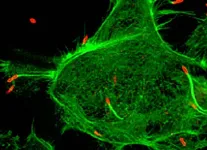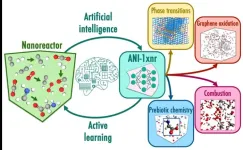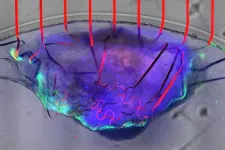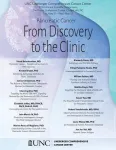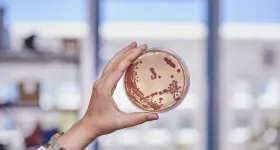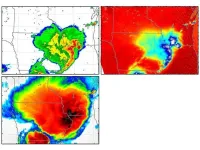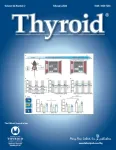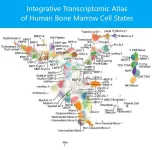(Press-News.org) In a mouse study, UCLA researchers tested a vaccine against the bacterium that causes melioidosis and found it was highly protective against the disease, which is endemic in many tropical areas, causing approximately 165,000 cases with 89,000 fatalities around the world each year.
The bacterium, called Burkholderia pseudomallei, is spread through contact with contaminated soil and water through inhalation, ingestion or broken skin. It is so dangerous that it is categorized as a Tier 1 Select Agent of bioterrorism, and it can cause rapidly fatal pneumonia when inhaled in low doses. If aerosolized and unleashed in a terror attack, it could lead to widespread death.
To date there are no licensed vaccines against the bacterium, said senior author Dr. Marcus Horwitz, Distinguished Professor of Medicine, in the division of infectious diseases, and of Microbiology, Immunology and Molecular Genetics at the David Geffen School of Medicine at UCLA.
“A safe and effective vaccine is needed to prevent this disease as melioidosis is often difficult to diagnose, requires very lengthy treatment lasting three to six months, and has a high fatality rate even in high resource settings,” Horwitz said. “Such a vaccine would be of great benefit to people living in endemic regions, travelers, and military personnel stationed in these areas, and it would also reduce the risk from an intentional release of B. pseudomallei in a bioterrorist attack.”
The study is published in the peer-reviewed journal mBio.
The researchers developed the vaccine using a bacterial vector called LVS ΔcapB as a platform to express highly immunogenic proteins from B. pseudomallei that are able to induce an immune response that later protects the host from illness and death when infected with the pathogen. LVS ΔcapB, derived from a weakened form of a vaccine against tularemia, or “rabbit fever,” had been developed in Horwitz’s lab as a vector platform for creation of vaccines against other diseases caused by Tier 1 Select Agents such as anthrax and plague as well as tularemia.
They administered the new vaccine through both skin injection and intranasal delivery in a strain of mice that is particularly sensitive to B. pseudomallei lung infection. The researchers found that the vaccine was not only safe and non-toxic, but effective even against a highly lethal strain of the melioidosis bacteria. Intranasal administration provided better protection than skin injection, with just a single dose proving effective with long-lasting protection.
The next steps are to test the vaccine for protection against pneumonic melioidosis in a second animal model, which the Food and Drug Administration requires in the case of vaccines for which human efficacy studies cannot be conducted. If it passes that test, the vaccine would then become eligible for testing in humans for safety and immunogenicityS. The researchers will also evaluate the vaccine’s effectiveness against subcutaneous infection with B. pseudomallei, which is the way most cases of melioidosis are thought to be acquired naturally, and test it for efficacy against the closely related Tier 1 Select Agent pathogen Burkholderia mallei, which causes glanders in humans and animals.
Study co-authors are Michael Tullius, Peter Back, Saša Masleša-Galić, and Susana Nava of UCLA, and Richard Bowen of Colorado State University.
The study was funded by the National Institutes of Health (AI141390). Flow cytometry was performed in the UCLA Jonsson Comprehensive Cancer Center (JCCC) and Center for AIDS Research Flow Cytometry Core Facility that is supported by National Institutes of Health awards P30 CA016042 and 5P30 AI028697, and by the JCCC, the UCLA AIDS Institute, the David Geffen School of Medicine at UCLA, the UCLA Chancellor's Office, and the UCLA Vice Chancellor's Office of Research.
END
New vaccine against a highly fatal tropical disease – and potential bioterror weapon – demonstrates efficacy in animal studies
2024-03-21
ELSE PRESS RELEASES FROM THIS DATE:
Artificial intelligence helps explore chemistry frontiers
2024-03-21
The ability to simulate the behavior of systems at the atomic level represents a powerful tool for everything from drug design to materials discovery. A team led by Los Alamos National Laboratory researchers has developed machine learning interatomic potentials that predict molecular energies and forces acting on atoms, enabling simulations that save time and expense compared with existing computational methods.
“Machine learning potentials increasingly offer an effective alternative to computationally ...
UMass Amherst engineers create bioelectronic mesh capable of growing with cardiac tissues for comprehensive heart monitoring
2024-03-21
AMHERST, Mass. – A team of engineers led by the University of Massachusetts Amherst and including colleagues from the Massachusetts Institute of Technology (MIT) recently announced in the journal Nature Communications that they had successfully built a tissue-like bioelectronic mesh system integrated with an array of atom-thin graphene sensors that can simultaneously measure both the electrical signal and the physical movement of cells in lab-grown human cardiac tissue. In a research first, this tissue-like mesh can grow along with the cardiac cells, ...
Researchers take major step toward developing next-generation solar cells
2024-03-21
The solar energy world is ready for a revolution. Scientists are racing to develop a new type of solar cell using materials that can convert electricity more efficiently than today’s panels.
In a new paper published February 26 in the journal Nature Energy, a University of Colorado Boulder researcher and his international collaborators unveiled an innovative method to manufacture the new solar cells, known as perovskite cells, an achievement critical for the commercialization of what ...
CUNY ISPH to launch next phase of community-based cohort study to track short- and long-term effects of multiple respiratory viruses
2024-03-21
The City University of New York (CUNY) Institute for Implementation Science in Population Health (ISPH) and the CUNY Graduate School of Public Health and Health Policy (CUNY SPH), in collaboration with Pfizer, are initiating a critical two-year prospective epidemiologic study in the spring of 2024 to track acute respiratory infections across the United States.
Project PROTECTS (Prospective Respiratory Outcomes from Tracking and Evaluating Community-based TeSting) builds on the CHASING COVID Cohort Study, which has monitored SARS-CoV-2 infection rates and ...
47th Annual UNC Lineberger Scientific Symposium: “Pancreatic Cancer: From Discovery to the Clinic”
2024-03-21
UNC Lineberger Comprehensive Cancer Center is hosting its 47th annual scientific symposium, “Pancreatic Cancer: From Discovery to the Clinic,” on May 21-22 at the Friday Center for Continuing Education in Chapel Hill, North Carolina.
The symposium is free and will feature 15 talks on the latest in pancreatic cancer basic, translational and clinical research by faculty at the University of North Carolina, Dana-Farber Cancer Institute, Johns Hopkins Sidney Kimmel Cancer Center, Memorial Sloan Kettering Cancer Center, University of Michigan ...
A new path to drug diversity
2024-03-21
Many important medicines, such as antibiotics and anticancer drugs, are derived from natural products from Bacteria. The enzyme complexes that produce these active ingredients have a modular design that makes them ideal tools for synthetic biology. By exploring protein evolution, a team led by Helge Bode from the Max Planck Institute for Terrestrial Microbiology in Marburg, Germany, has found new "fusion sites" that enable faster and more targeted drug development.
Industry often follows the assembly line principle: components are systematically assembled into complex products, with different production lines yielding different products. However, not humans are the ...
Satellite data assimilation improves forecasts of severe weather
2024-03-21
UNIVERSITY PARK, Pa. — In 2020, a line of severe thunderstorms unleashed powerful winds that caused billions in damages across the Midwest United States. A technique developed by Penn State scientists that incorporates satellite data could improve forecasts — including where the most powerful winds will occur — for similar severe weather events.
The researchers reported in the journal Geophysical Research Letters that adding microwave data collected by low-Earth-orbiting satellites to existing computer weather forecast models produced more accurate forecasts of surface gusts in a case study of the 2020 Midwest ...
Morality among low-risk differentiated thyroid cancer survivors in the U.S.
2024-03-21
A new study has shown that overall and cause-specific mortality rates in individuals in the U.S. with low-risk differentiated thyroid cancer (DTC) are low. The study is published in the peer-reviewed journal Thyroid®, the official journal of the American Thyroid Association® (ATA®). Click here to read the article now.
Cari Kitahara, PhD, from the National Cancer Institute, National Institutes of Health, and coauthors identified 51,854 individuals diagnosed with first primary DTC at low risk ...
Most detailed atlas to date of human blood stem cells could guide future leukemia care
2024-03-21
Thanks to an unusual application of game theory and machine learning technology, a large team of scientists led by experts at Cincinnati Children’s has published the world’s most detailed “atlas” of the many types of stem cells and early progenitors involved in producing human blood from diverse donors.
The team has identified more than 80 distinct subsets of hematopoietic stem and progenitor cells (HSPCs) – early-stage cells that kick off production of mature red cells, white cells ...
Novel method to measure root depth may lead to more resilient crops
2024-03-21
UNIVERSITY PARK, Pa. — As climate change worsens global drought conditions, hindering crop production, the search for ways to capture and store atmospheric carbon causing the phenomenon has intensified. Penn State researchers have developed a new high-tech tool that could spur changes in how crops withstand drought, acquire nitrogen and store carbon deeper in soil.
In findings published in the January issue of Crop Science, they describe a process in which the depth of plant roots can be accurately estimated by scanning leaves with ...
